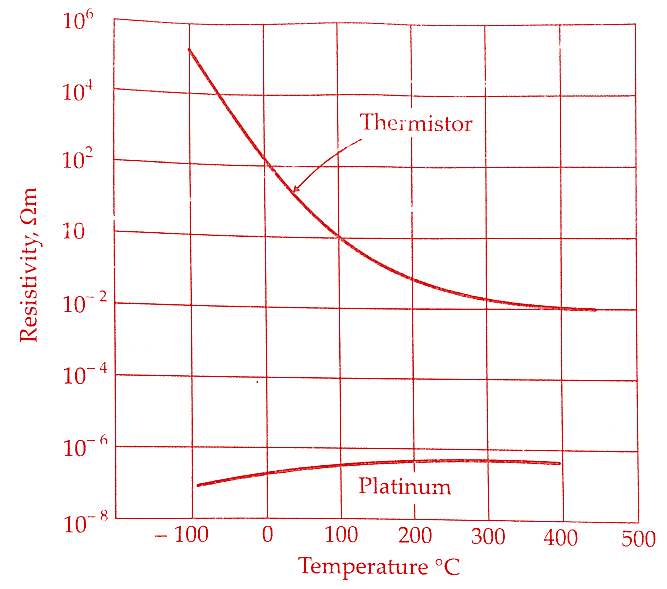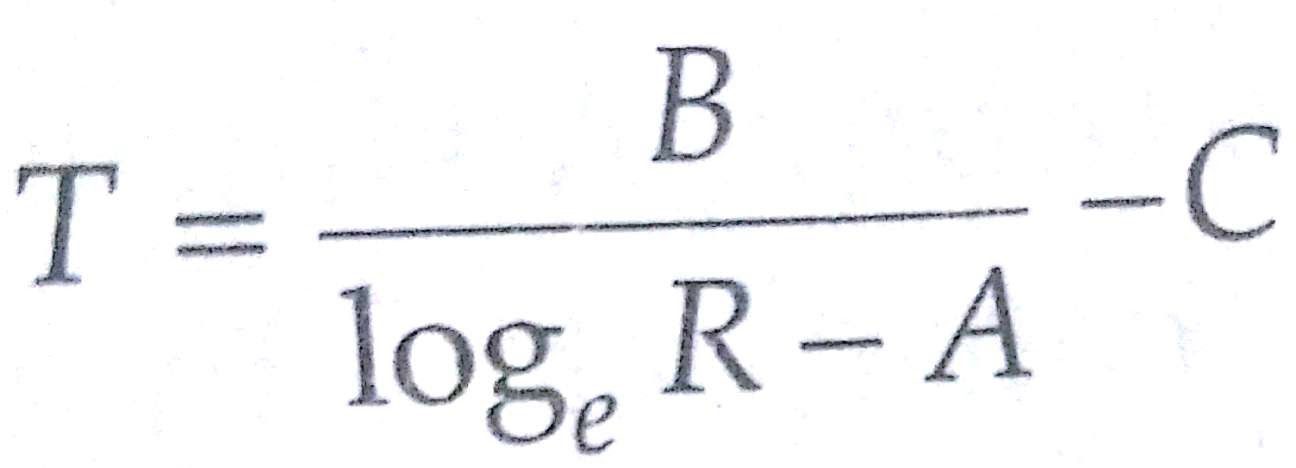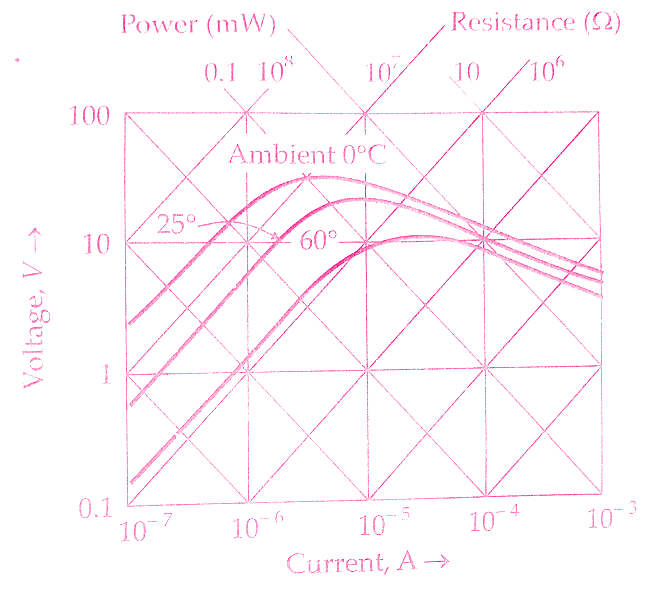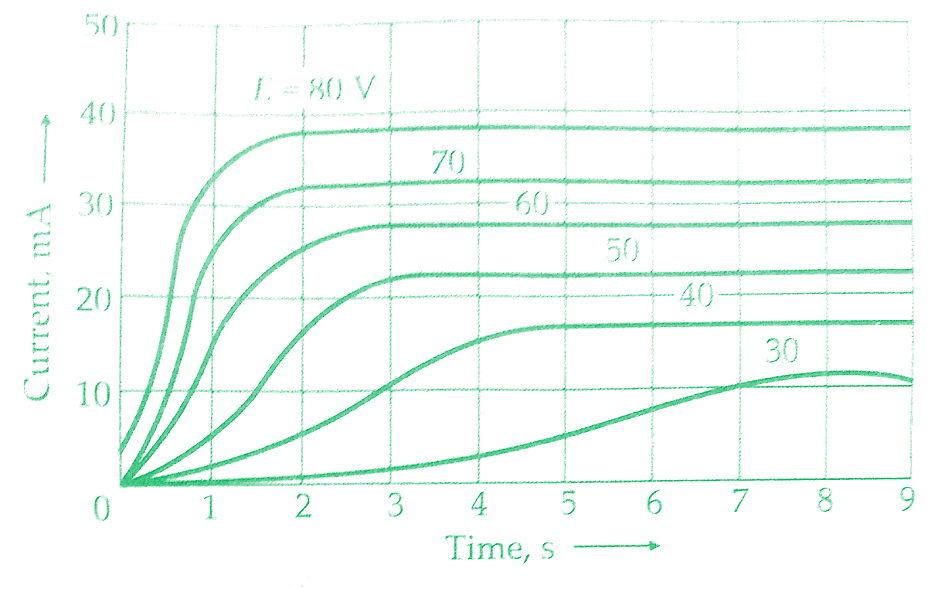Construction of Thermistor Working:
Thermistor is a contraction of a term “thermal resistors”.Thermistors are generally composed of semiconductor materials. Although positive temperature coefficient of units (which exhibit an increase in the value of resistance with the increase in temperature) are available, most thermistors have a negative coefficient of temperature resistance i.e. their resistance decreases with the increase of temperature.
The negative temperature coefficient of resistance can be as large as several percent per degree Celsius.This allows the thermistor circuits to detect very small changes in temperature which could not be observed with an RTD or a thermocouple.In some cases, the resistance of thermistor at room temperature may decrease as much as 5 percent for each 1°C rise in temperature.
Must Read:
This high sensitivity to temperature changes makes thermistors extremely useful for precision temperature measurements control and compensation.Thermistors are widely used in applications which involve measurements in the range of — 60°C to 15°C. The resistance of thermistors ranges from 0.5 Ω to 0.75 MΩ.
Thermistor is a highly sensitive device.The price to be paid off for the high sensitivity is in terms of linearity.The thermistor exhibits a highly non-linear characteristic of resistance versus temperature.
Thermistors are composed of a sintered mixture of metallic oxides such as manganese, nickel, cobalt, copper, iron and uranium. They are available in a variety of sizes and shapes.The thermistors may be in the form of beads, rods and discs. Some of the commercial forms are shown in the below figure.
A thermistor in the form of a bead is smallest in size and the bead may have a diameter of 0.015mm to 1.25mm.Beads may be sealed in the tips of solid glass rods to form probes which may be easier to mount than the beads. Glass probes have a diameter of about 2.5mm and a length which varies from 6 mm to 50 mm.Discs are made by pressing material under high pressure into cylindrical flat shapes with diameters ranging from 2.5 mm to 25 mm.
Resistance-Temperature Characteristics of Thermistors:
The mathematical expression for the relationship between the resistance of a thermistor and absolute temperature of the thermistor is
where RT1 = resistance of the thermistor at absolute temperature T1 °K
RT2 = resistance of the thermistor at absolute temperature T2 °K
and β = constant depending upon the material of thermistor, typically 3500 to 4500 °K.
The resistance temperature characteristics of a typical thermistor are given in below figure.The resistance temperature characteristics of below figure show that a thermistor has a very high negative temperature coefficient of resistance, making it an ideal temperature transducer.
Must Read:
The figure below also shows the resistance temperature characteristics of platinum which is a commonly used material for resistance thermometers.Let us compare the characteristics of the two materials.Between – 100°C and 400°C, the thermistor changes its resistivity from 10⁵ to 10⁻² Ωm, a factor of 10⁷, while platinum changes its resistivity by a factor of about 10 within the same temperature range. This explains the high sensitivity of thermistors for measurement of temperature.
The characteristics of thermistors are no doubt non-linear but a linear approximation of the resistance-temperature curve can be obtained over a small range of temperature.Thus, for a limited range of temperature, the resistance of a thermistor varies as given by the equation.
Rθ = Rθ∘ [1+ αθ∘ ∆θ]
A thermistor exhibits a negative resistance temperature coefficient which is typically about 0.05/°C. An individual thermistor curve can be closely approximated through the Steinhart-Hart equation:
1/T = A + B loge R + C(loge R)³
where T = temperature ; °K
R = resistance of thermistor ; Ω
A, B, C = curve fitting constants
A, B and C are found by selecting three data points on the published data curve and solving the three simultaneous equations. When the data points are chosen to span no more than 100°C within the nominal centre of thermistors temperature range; this equation approaches a remarkable ±0.2°C curve fit.
A simpler equation is,
where A, B and C are found by selecting three (R, T) data points and solving three resultant simultaneous equations.The equation above must be applied over a narrower temperature range in order to approach the accuracy achieved by Steinhart-Hart equation.Another relationship that can be conveniently used for resistance-temperature curve of thermistors is
RT = aR0 exp(b/T)
where, RT , R0 = resistance of the thermistor at temperature T °K and ice point respectively.
Voltage-Current and Current-Time Characteristics of Thermistors:
Three important characteristics of thermistor make them extremely useful in measurement and control applications.These are
1.Resistance-temperature characteristics
2.Voltage-current characteristics
3.Current-time characteristics.
1)Resistance-Temperature Characteristics:
The resistance-temperature characteristics have already been described above.The other two characteristics are described below.
2)Voltage-Current Characteristics of thermistors:
These characteristics of thermistors are shown in the below figure.The figure below shows that the voltage drop across a thermistor increases with increasing current until it reaches a peak value beyond which the voltage drop decreases as the current increases.In this portion of the curve, the thermistor exhibits a negative resistance characteristic.
If a very small voltage is applied to the thermistor, the resulting small current does not produce sufficient heat to raise the temperature of the thermistor above ambient.Under this condition, Ohm’s law is followed and the current is proportional to the applied voltage.
Larger currents, at larger applied voltages, produce enough heat to raise the thermistor temperature above the ambient temperature and its resistance then decreases.As a result, more current is then drawn and the resistance decreases further.
The current continues to increase until the heat dissipation of the thermistor equals the power supplied to it.Therefore, under any fixed ambient conditions, the resistance of a thermistor is largely a function of the power being dissipated within itself, provided that there is enough power available to raise its temperature above ambient.Under such operating conditions, the temperature of the thermistor may rise 100°C or 200°C and its resistance may drop to one-thousandth of its value at low current.
This characteristic of self-heat provides an entirely new field of uses for the thermistor.In the self-heat state, the thermistor is sensitive to anything that changes the rate at which heat is conducted away from it.
It can so be used to measure flow, pressure, liquid level, composition of gases, etc.If on the other hand, the rate of heat removal is fixed, then the thermistor is sensitive to power input and can be used for voltage or power-level control.
Must Read:
3)Current Time Characteristics of Thermistors:
The current-time characteristics of thermistor shown in the below figure indicate the time delay in reaching maximum current as a function of the applied voltage.When the heating effect just described occurs in a thermistor network, a certain finite time is required for the thermistor to heat and the current to build up to a maximum steady-state value.
This time, although fixed for a given set of circuit parameters, may easily be varied by changing the applied voltage or the series resistance of the circuit.This time-current effect provides a simple and accurate means of achieving time delays from milliseconds to many minutes.
Conclusion:
We have learnt about Construction & Characteristics of Thermistor.You can download this article as pdf, ppt.
Comment below for any Queries.





